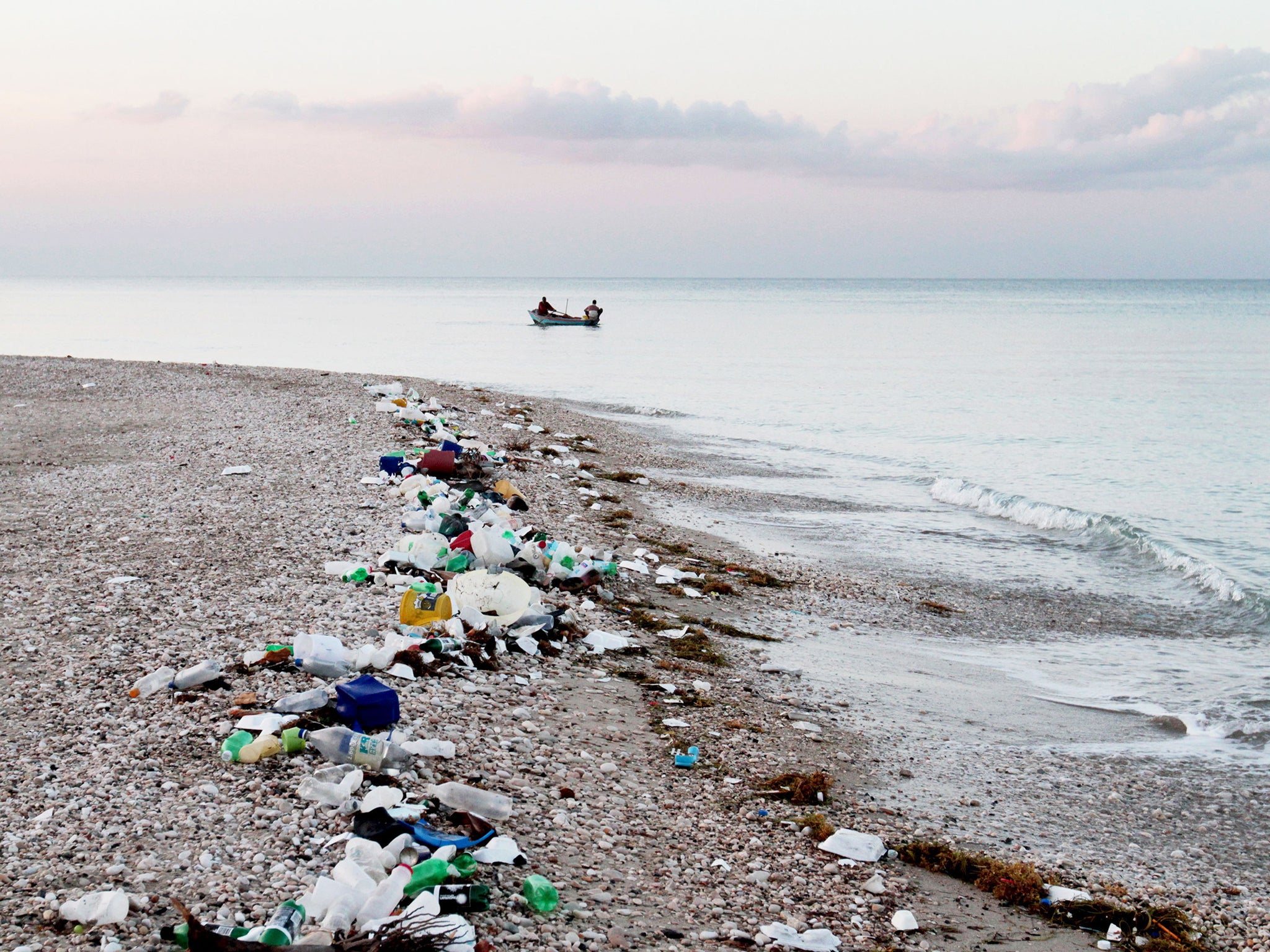Plastic waste in ocean to increase tenfold by 2020
Study estimates that 8 million tons of plastic waste are dumped in the ocean each year

The world’s oceans are being filled with enough plastic waste to thickly line every coastline in the world, according to the first detailed global assessment of the problem.
Scientists estimate that about 8 million tons of plastic debris such as food packaging and plastic bottles are being washed into the oceans each year – and the cumulative quantity of waste will result in a tenfold increase in the total amount of plastic in the sea by 2020.
“Our estimate of 8 million metric tons going into the oceans in 2010 is the equivalent to five grocery bags filled with plastic for every foot of coastline in the world,” said Jenna Jambeck, assistant professor of environmental engineering at the University of Georgia.
“In 2025, the annual input would be about twice the 2010 input, or 10 bags full of plastic per foot of coastline. So the cumulative input for 2025 would be nearly 20 times our 2010 estimate – 100 bags of plastic per foot of coastline in the world.”
Researchers had previously calculated that there were about 245,000 tons of plastic waste in the oceans. But this was based on the amount of plastic found floating on the sea surface and did not take into account the waste that has sunk.
The latest estimate comes from the total input of plastic waste, from people living within 50km of the coastline in the 192 countries studied.
“Until now, we have been estimating the amount of plastic pollution in the ocean by taking a ship far offshore, towing a plankton net and counting each individual piece of plastic collected. This is a very tedious and expensive task,” Dr Jambeck said.
“Our figure is larger because what is found floating on the surface of the ocean is only a portion of what is going in. Some of it sinks, some of it goes to other locations. We don’t have a good handle on where it all is going.”
The study, published in the journal Science, estimated that about 275 million tons of plastic waste was being generated each year in 192 countries around the world, with between 4.8 million and 12.7 million tons being washed or dumped into the sea.
Predictions of how this waste will increase in the near future took into account the growing industrialisation of developing countries, population growth and attempts to limit the flow of plastic debris into the oceans based on waste-management activities on land.
“Our future estimates are in line with the growth of plastic in our waste stream and also population growth,” Dr Jambeck said.
Plastic waste affects marine wildlife such as dolphins, seals, turtles, sea birds and fish, which become entangled or choked by it. And when plastic breaks down to smaller particles of less than a millimetre it can caused problems for smaller organisms when ingested, scientists said.
“More recent research has focused on plastics fragmenting into smaller pieces in the ocean and becoming microplastic particles. These smaller particles are more available to the lower end of the food chain, for example smaller fish,” Dr Jambeck said.
Kara Law of the Sea Education Association in Woods Hole, Massachusetts, a co-author of the study, said: “This work gives us a sense of just how much we need to find in the ocean to add up to the total. There is a lot of plastic sitting in the bottom of the ocean and on beaches worldwide. Right now, we’re mainly measuring plastic that floats, and only in a relatively few locations.”
Join our commenting forum
Join thought-provoking conversations, follow other Independent readers and see their replies
Comments
Bookmark popover
Removed from bookmarks